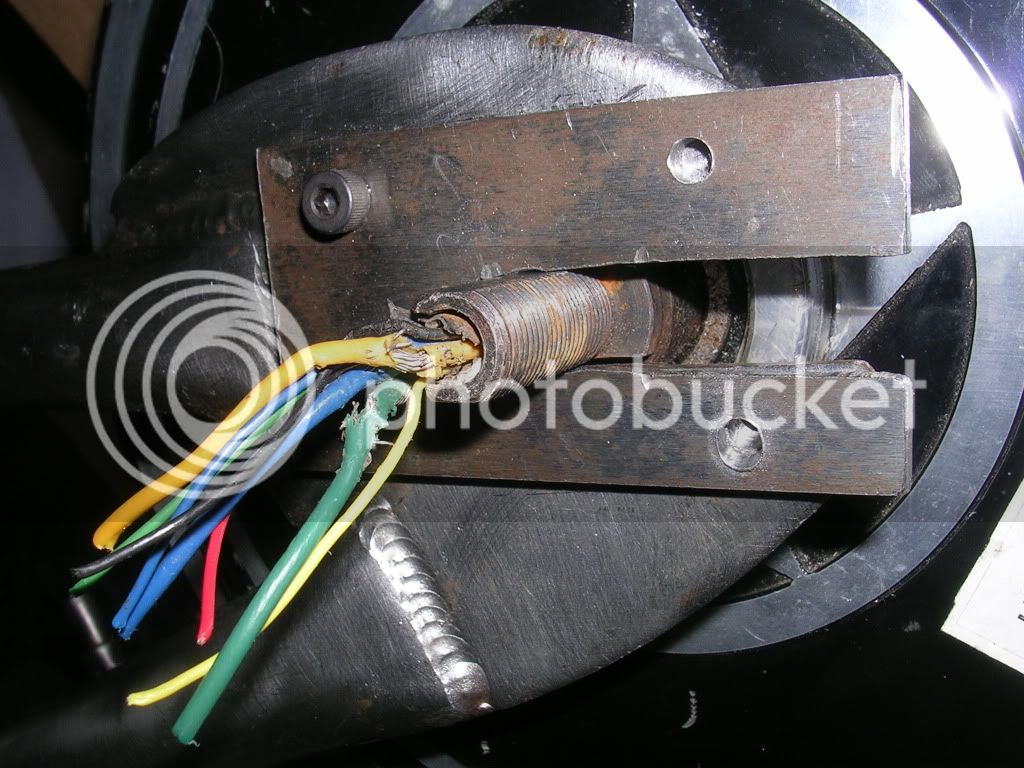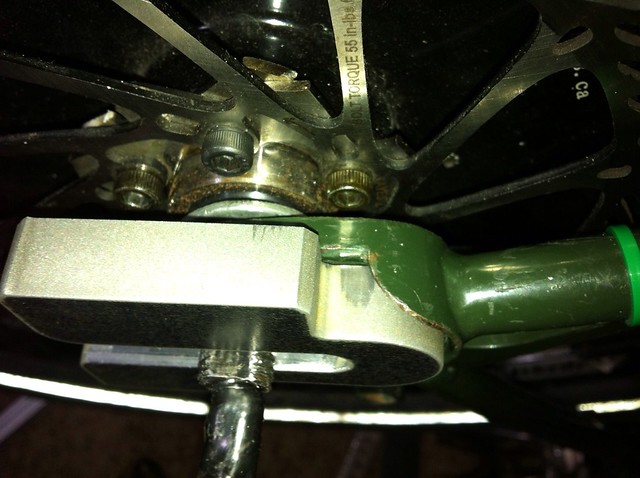John in CR
100 TW
Alan,
You'd probably consider your Greyborg to be well engineered, but guess what? Their thick dropouts wallowed out for at least one user. I've purchased quite a few used motors and every single one that came with some kind of torque arm had significant rounding in the flat areas. My early bikes with 1/2" of steel per side and tap in fits both wallowed out the dropouts within 2 years of use, no spin but they would have eventually. Add in the fact that we typically don't know the materials properties of the axle, and a detailed analysis becomes just a shot in the dark. I thought 1/2" was overkill at the time, but those kinds of dimensions didn't prove adequate until I came up with the idea of clamping dropouts, which has proven to be the only route to long-term reliability. The adequate thickness with clamping may very well be somewhere between 1/4" and 1/2", but without going to some kind of welded on the end bolt sleeves like Arlo1 did, you really need more thickness just to get a decent sized bolt through with enough material to clamp it down nice and tight. Too thin also risks deforming the axle with the clamp, and for wire through the axle motors it can collapse the axle on the wire side.
Justin's testing proved axle nuts play a primary role in preventing spin outs, because they spread the load over a lot of surface area in the threads and at a greater radius at the nut face. Tight nuts proved more important than the typical thickness dropouts and torque arms, I'm not one to do pre-ride inspections. Who really does? That means I can't rely on that typical system, especially with regen which has a propensity to loosen any nut, so my torque dropouts need to stand on their own. Call it overkill if you want, but once you consider the risks of that connection, the typical 3X safety margin means a detailed engineering analysis is bound to come up with an answer greater than 1/2" per side and I'm running speed, not high torque.
Doc's special steel torque arms are a bit thinner, and plenty strong I'm sure. I'd worry more about the axle deforming first, something I've already seen.
You'd probably consider your Greyborg to be well engineered, but guess what? Their thick dropouts wallowed out for at least one user. I've purchased quite a few used motors and every single one that came with some kind of torque arm had significant rounding in the flat areas. My early bikes with 1/2" of steel per side and tap in fits both wallowed out the dropouts within 2 years of use, no spin but they would have eventually. Add in the fact that we typically don't know the materials properties of the axle, and a detailed analysis becomes just a shot in the dark. I thought 1/2" was overkill at the time, but those kinds of dimensions didn't prove adequate until I came up with the idea of clamping dropouts, which has proven to be the only route to long-term reliability. The adequate thickness with clamping may very well be somewhere between 1/4" and 1/2", but without going to some kind of welded on the end bolt sleeves like Arlo1 did, you really need more thickness just to get a decent sized bolt through with enough material to clamp it down nice and tight. Too thin also risks deforming the axle with the clamp, and for wire through the axle motors it can collapse the axle on the wire side.
Justin's testing proved axle nuts play a primary role in preventing spin outs, because they spread the load over a lot of surface area in the threads and at a greater radius at the nut face. Tight nuts proved more important than the typical thickness dropouts and torque arms, I'm not one to do pre-ride inspections. Who really does? That means I can't rely on that typical system, especially with regen which has a propensity to loosen any nut, so my torque dropouts need to stand on their own. Call it overkill if you want, but once you consider the risks of that connection, the typical 3X safety margin means a detailed engineering analysis is bound to come up with an answer greater than 1/2" per side and I'm running speed, not high torque.
Doc's special steel torque arms are a bit thinner, and plenty strong I'm sure. I'd worry more about the axle deforming first, something I've already seen.




